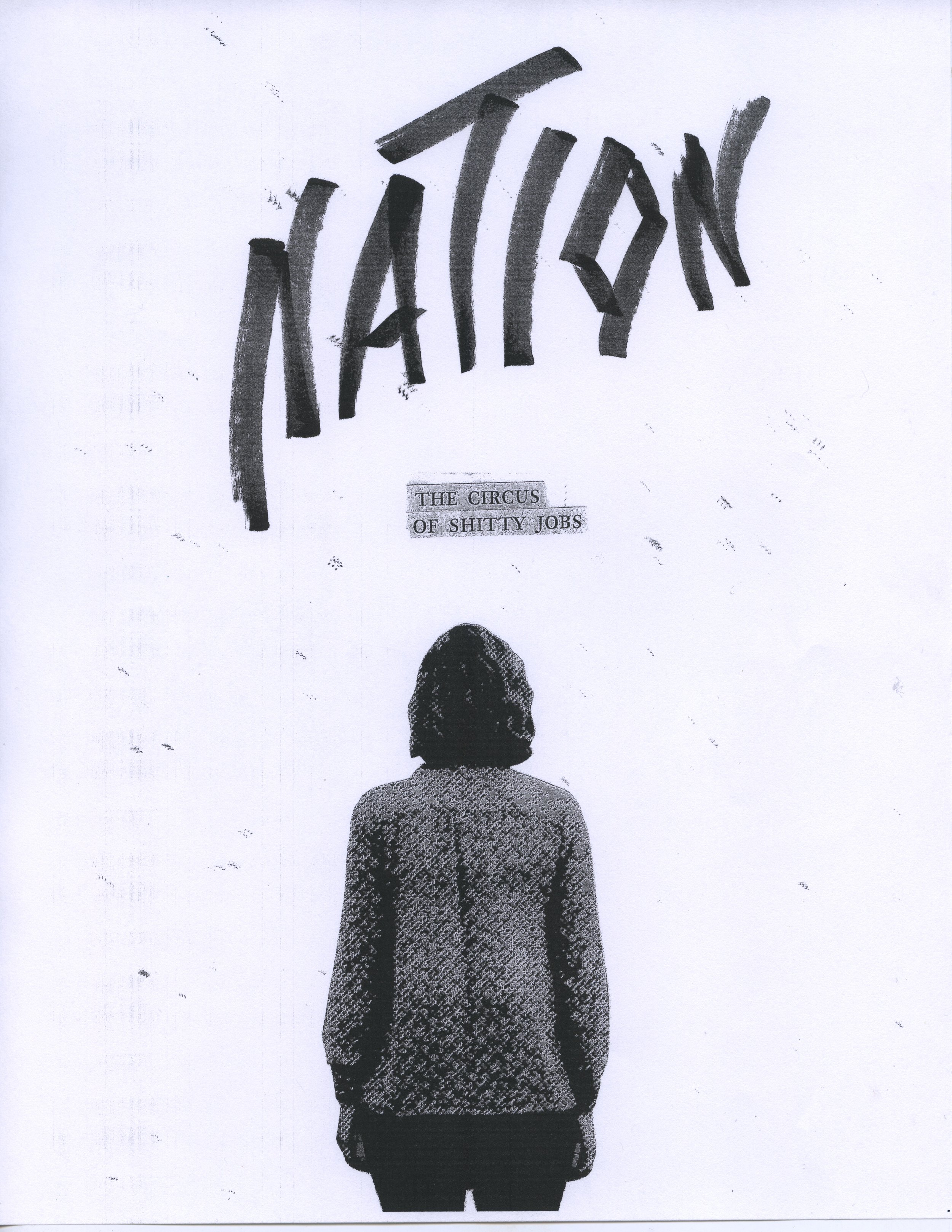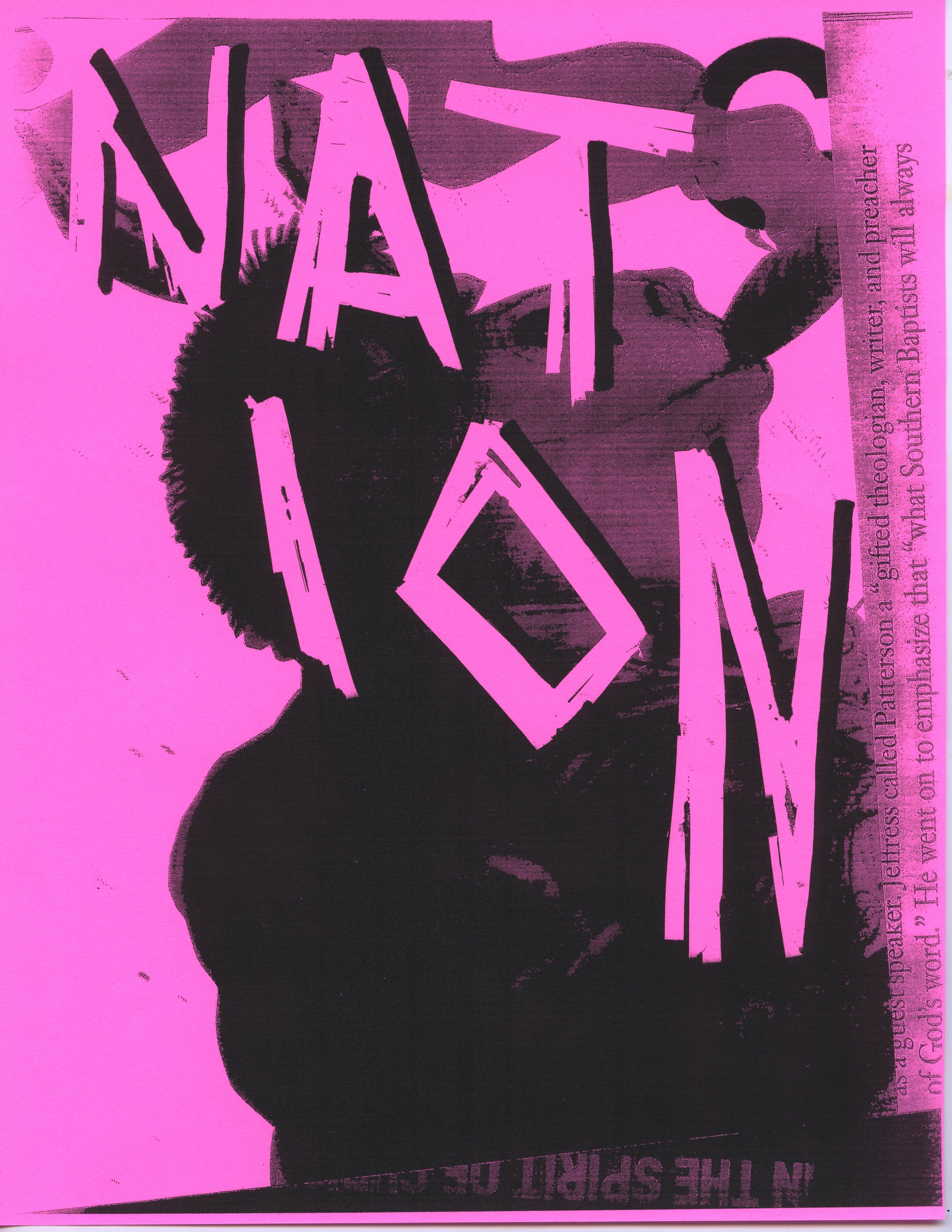Overview
COPY & PASTE
Copy & Paste is a series of collage workshops using ink-jet copiers conducted in collaboration with Third Street Academy Elementary, the Greenville Museum of Art, the Greenville Autism Society, and the Sheppard Memorial Library. These organizations were chosen due to their relationship with the public being mostly non-profits, and their need for art & design related programming. Printed 8.5x11in copy paper byproducts from these workshops would then be collaged together on a large panel of Homasote using wheat-paste as a representation of their collective work. Individual prints done by the participants could also be viewed in a spiral bound notebook presented beside the collaged panel. Their names would be listed above the spiral bound notebook to give proper credit to their work and give them a voice in a space where they might not typically have one.
Their main takeaways from these workshops are a greater understanding of value, texture, space, movement, and balance (some of the aforementioned principles/elements of art and design) and knowledge of how to design compositions using collaging techniques by punk designers in the 1970-80’s.
Every group had different needs depending on age, skill, mental ability, and physical mobility. With those factors in mind my approach to each group was unique. During the workshops each participant would be provided print media(magazines, newspapers, books, etc.), textures printed on transparency film & velum, alcohol ink stamp books, pens of varying weights, correction tape, scissors, hobby knives, and fabrics of different weaves. Knives and some scissors though could not be proved to Third Street Academy Elementary and the Greenville Autism society since the faculty at both advised against it due to safety concerns. The groups were then walked through a clear step-by-step process in how to non-destructively collage due to the limited amount of provided material available, which for the most part stayed consistent across all workshops.
Afterwards they would choose from provided color groups of copy paper(pink & blue) what they might want to have their final copies printed on for them to take home. This was not so rigid that they had to only choose one color group to print, but it was necessary to differentiate each group from one another on the collaged panel.
Third Street Academy Elementary
Greenville Museum
of Art
Greenville Autism Society
The Sheppard Memorial Library
Process
After experimenting with The Nation magazines found at a local library in Greenville, NC I designed a few test collages(FIG 1-3.) similar to the process utilized by 1970’s punk designers. This was to ensure that the steps were not overtly complicated due to the two hour time limit allotted by many of the organizations who participated.
Tools, papers, and collage materials used aside from The Nation magazines were collected to prepare for the workshops. The Nation magazines were not provided during the workshops because of my concern in damaging loaned property not owned by East Carolina University.
Third Street Academy Elementary, an all boys school, was the first of the workshops and so it was also the one to have the most unexpected results. The group that participated were their fifth graders and their excitement upon realizing they could produce numerous copies after designing their collage informed me that the workshop was functioning to a frankly surprising success. They approached materiality with a ferocity that was both invigorating and terrifying. The students mixed alcohol stamp ink with correction fluid like a painter with a wide bristle brush, destroying what was thought to have been a streamlined workshop. Despite the mess the work spoke for itself. A mixture of values scattered across pages in blots of white and black created a mosaic that underlined the term playful(FIG 5). Their process was dangerous to the future of the printed media though due to their zealous use of the refill containers for the alcohol ink stamp pads. Therefore in later workshops parameters in material usage were constrained and stamp pads were no longer provided.
The proceeding Greenville Museum of Art workshop was far more predictable but still resulted in phenomenal work. The age spread was far wider for this group. The consensus from the previous group was to print in shades of blue, which was predictable from an all-boys school, and in response to that GMoA’s workshop decided to print exclusively in shades of pink(FIG 6.). To preserve the eye, beige and white prints were added to the final panels to ensure a balanced collaged panel. The response to previous workshops was an unexpected surprise and resulted in the decision for every panel to be colored uniquely from one another.
Next, the Greenville Autism Society approached the copier collaging process with a similar excitement to Third Street Academy Elementary. It differed from the past workshop in large part because it was a far more controlled environment. This was most-likely caused by my greater skill at hosting and the support the staff at the society provided. They noticed the variety of colors available and wanted to print with both pink and blue shades(FIG 9.) To this I was overjoyed and elected to present this in their panel, wheat-pasting both pink and blue together.
Finally, the Sheppard Memorial Library was much like the one with GMoA. The group was diverse in age and skill. So, with instruction hobby knives were provided and I am happy to report that no injuries were had. A neutral became needed because of the wide breadth of saturated colors at play in every panel proceeding the previous workshops. In response, a beige and white panel became the final panel(FIG 10.) to be collaged with the consent of the last group.







